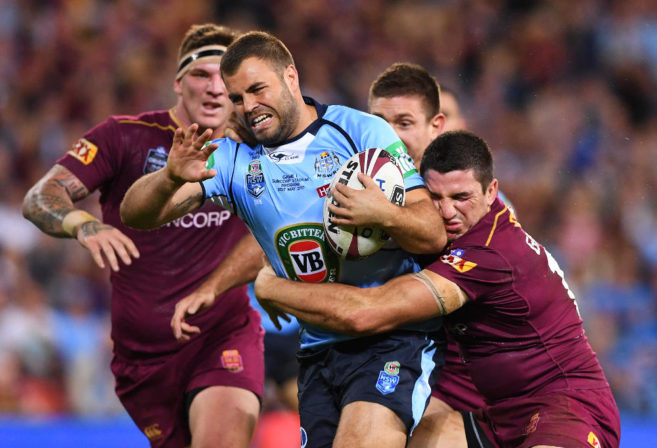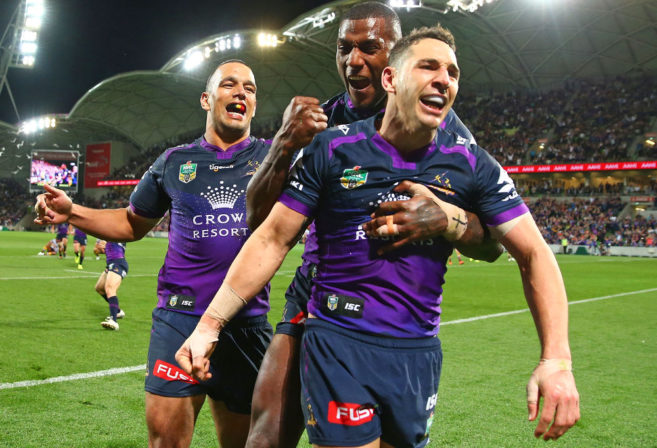Without wanting to engage in some sort of anti-Panthers campaign, there was something interesting about their season. In short, it was soft.
Penrith had a blessed draw this season and made the most of the opportunities they were given. With only two wins against top eight teams and playing against the top five clubs – Storm, Roosters, Broncos, Eels and Sharks – only once throughout the home-and-away rounds, the Panthers were busy knocking off the also-rans.
Contrastingly, Penrith had the luxury of playing five of the bottom six clubs – Newcastle, Wests Tigers, New Zealand, the Bulldogs and South Sydney – on two separate occasions. It was an astonishing piece of fortune that the Panthers used to full extent, culminating in their appearance in a finals series in which they had no right to be involved.
Good on them for using the draw to their advantage, however, it does raise questions of parity and equity.
A draw based on the previous year’s results and some rather long-term crystal balling is a method far too roughshod for the energy, money and passion invested in the game by all its stakeholders.
Clubs, fans and corporate interests deserve better and to me, there appears only one way to fix the current issues with the draw – more teams.
More teams I hear you scream? There are already too many in Sydney at the moment, surely?
First port of call is to expand to both Perth and Adelaide, where there is obvious finance and interest, establish a second team in Brisbane and allow north Sydney to take ownership of the Central Coast and grant them a license for the region.
That adds four teams and brings our total to 20, while presenting an interesting assortment of side benefits as well.
Firstly, Perth will finally have the team they deserve. The numbers suggest interest, crowds and investment. Adelaide may not have the same impact in the short term yet they too need a place if the NRL dares to even dream of a truly national competition.
North Sydney tap into the Central Coast market, one with considerable numbers of youth playing the game and plenty of passion for league. The re-emergence of the Bears, just north of their spiritual home, would bring people back to the franchise in droves.
Lastly, the second team in Brisbane would eliminate the ridiculous monopoly that the Broncos have enjoyed in such a huge market and finally give programmers something to think about when allocating Friday night games.
How does this all solve the issues with fairness and equity in the home-and-away series? Quite simply it removes luck, disparity and unfairness, as the clubs would all play each other once.
It’s been mooted previously but, despite the romance of the traditional two matches played both home and away, modern realities have seen this format die a very slow death. Under this approach, each club would play 19 matches with no byes required.
Three stand-alone representative weekends would fall through Weeks 6-14. State of Origin matches would be played on Friday night and the Jillaroos would take the Saturday slot against the Kiwis in what would become a traditional three-match series.

(AAP Image/Dave Hunt)
Sunday afternoons would see Samoa, Fiji, Papua New Guinea, Tonga, Lebanon and Malta all play international matches, with perhaps two games played on each day.
NRL players not playing in these fixtures would be well rested and fresh as the season progresses and short-term injury recovery in representative weekends could see fewer matches missed at club level.
The representative players themselves are finally relieved of the unrealistic expectation of playing a second game within 48 hours of the first.
At season’s end, the ladder will reflect the consistency of the teams at the top and the failings of those at the bottom, however under my plan, there is always something to play for.
Week 20 is a cracking round with only the bottom eight teams involved. The top 12 receive a pre-finals rest. The draw would look something like this:
13 versus 20
14 versus 19
15 versus 18
16 versus 17
Matches are sudden death and the ultimate purpose is to reduce the total to the magical number of 16. The four winners are then re-ranked based on where they finished on the home-and-away table and become teams 13, 14, 15 and 16.
Something of a repechage, I suppose. Some might suggest the standard of football might not befit a finals atmosphere, however, can you imagine the clash between the Tigers and the Knights in Round 20, 2017 if they were given a chance to take one more step forward?
The crowd would swell and the excitement, as in any sudden death contest, would be high.
With 16 teams remaining, we turn to our grunting, petulant brats of the tennis world for inspiration and Round 21 looks like this:
1 versus 16
2 versus 15
3 versus 14
4 versus 13
5 versus 12
6 versus 11
7 versus 10
8 versus 9
Basically, a Round of 16 at the Australian Open in January. If the top eight survive, Round 22 becomes a quarter-final round.
1 versus 8
2 versus 7
3 versus 6
4 versus 5

(Photo by Scott Barbour/Getty Images)
The Round 23 semi-finals would potentially see the top four teams clash, although not if the Cowboys have anything to do with it, and the two victors would play the grand final in week 24.
Crowds have been the hot talking point this season and since the inception of the television-driven Friday twilight game, fans have become more sceptical than ever of the NRL’s consideration of their feelings.
This system would pack stadiums as the finals evolve. A slightly shorter home-and-away season with all teams guaranteed some involvement at season’s end would add to the drama. The top teams would be fighting for softer games as the finals begin.
Sure there is no second bite of the cherry, however being knocked off by the 13th-ranked team in the first round of finals should preclude any club from claiming rights to the title.
Without the extra teams, it doesn’t work. Playing 15 games and then moving into the finals system above would make for a very short season and the Round 20 play-offs wouldn’t even be required.
However, with 19 rounds of football, where clubs face each other once, three exciting stand-alone weekends of representative football and five weeks of finals, our season would be fairer, clearer and more meaningful in the latter stages.
The annoying byes are removed and the AFL lose free-swing weekends in Sydney where the NRL fail to provide any entertainment for the league-hungry public. It would also be 27 weeks long.
As a side point, how many games would Cameron Smith play in a full season of NRL if he remained fit? Twenty-eight, if his Storm team marched all the way to the finals.
The best thing about the plan above is that Smith plays the same number of matches, bar one, is only required to play once a week and a team like the Panthers wouldn’t make the finals.































































































